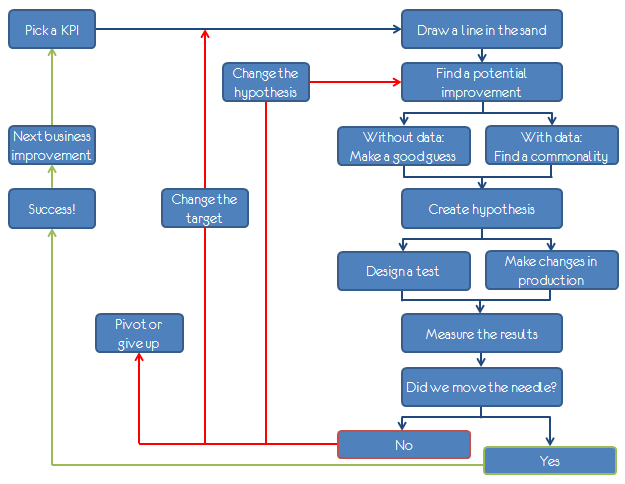When we talk about metrics, analytics, and business intelligence, we forget that measuring human resources isn’t the goal.
It’s an objective. Yes, we need to do it, but it isn’t the end of the process. At the end, after we’ve spent all the time and effort measuring human resources as best we can, all we have is data.
And it’s what you do with that data that matters.
Measuring human resources with lean analytics
This is a massive post on analytics. Not specifically written for HR, but wildly valuable. Here’s a snippet to get you started:
This should not be news to you. To win in business you need to follow this process: Metrics > Hypothesis > Experiment > Act. Online, offline or nonline.
Yet this structure rarely exists in companies.
We are far too enamored with data collection and reporting the standard metrics we love because others love them because someone else said they were nice so many years ago.
And so starts a long, detailed journey into using analytics for business.
For the visual learners
This handy dandy chart is there for those of us who learn by seeing. It’s a great representation of the flow for actually using metrics versus simply collecting them. If you want to simplify that further and look at four key steps in the process, here they are:
- Figure out what to improve (What’s the problem?)
- Form a hypothesis (I think xyz will solve the problem.)
- Create an experiment (Let’s test xyz.)
- Measure and decide what to do
Each of those steps is important, but the one I see most often lacking is number 4. In the big scheme of things it’s relatively easy to guess a problem (#1), guess a solution (#2) and test out an idea on a pilot group of employees/managers (#3). It’s the moment when you are actually measuring human resources and making decisions based on those measurements that I see the problems come in. People lose focus. They don’t know what to do. They might not really want to know the answer to the problem at hand.
It could be a dozen different things, but I would encourage you that step 4 is where you see the best HR pros stand out. They are the ones that embody the true purpose of human resources.
For those measuring human resources
As I read through the amazing article I linked above, I kept wondering about HR topics, and I realized I already have a go-to resource for those questions.
If you are looking for ideas of what to measure, how to use it, etc. in an HR context, please check out everything that Cathy Missildine-Martin has ever written. She does great work and is highly competent in this area.



